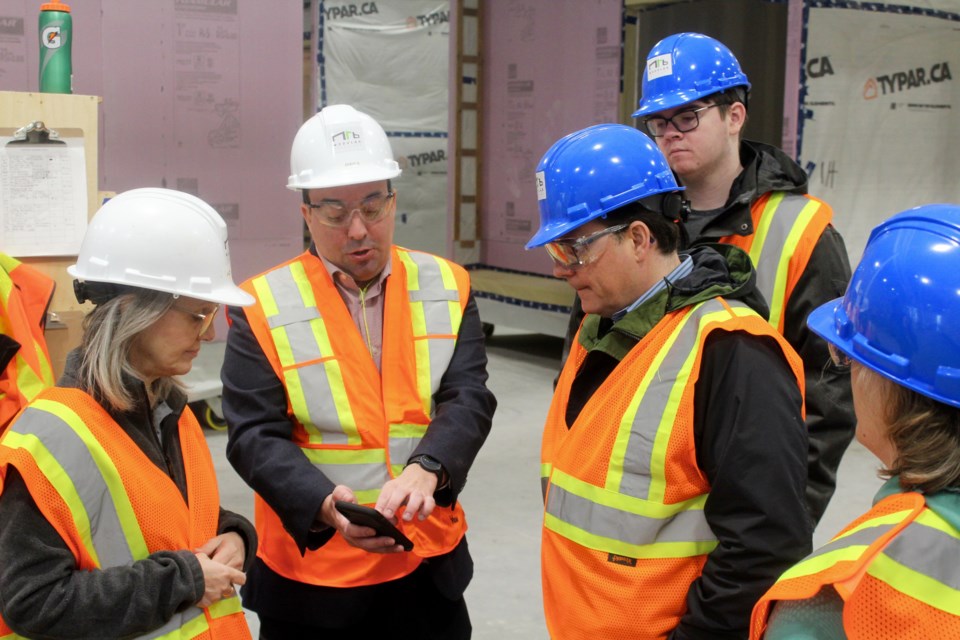Part of the answer to the province’s question of how they will build 1.5 million homes by 2031 may be right here in Cambridge.
Ontario Green Party leader Mike Schreiner paid a visit to NRB Modular Solutions on Langs Drive to take a tour of the facility and see how modular homes can impact the province’s goal.
NRB Modular Solutions is a turn-key volumetric building design-builder that provides multi-storey buildings in the supportive and affordable housing space. The homes are built offsite in a manufacturing facility before being shipped to a lot and assembled.
With construction taking place indoors, away from the elements and in an assembly-line style, modular homes can take 30 to 50 per cent less time to build than traditional homes.
It’s a time frame that’s incredibly important as the province addresses the housing crisis, Schreiner says.
“The housing affordability crisis requires urgent action,” Schreiner said.
“One of the fastest ways we can rapidly build homes for people that are affordable is through modular housing. It’s a part of what the Ontario Green’s have been putting forward as part of our housing affordability strategy.”
But just how quickly can these homes be constructed? Given site plan approvals are in place, a three to four story, 50-unit affordable housing building can be operational in 12-18 months.
Aside from the speed in which homes can be built, Schreiner believes the process will help keep developers off the greenbelt and put homes in the communities where they’re needed most.
“Let’s build homes in communities where people want to live and close to where they work, instead of on the greenbelt,” he said.
“The biggest advantage from the Ontario Green’s perspective is we can build affordable homes in existing communities. We don't need to be paving over farmland and wetlands that are so vital to protecting us.”
When it comes to being environmentally friendly and reducing the province’s carbon footprint, avoiding the greenbelt isn’t the only benefit to modular homes.
There is a significant reduction in construction waste and an increase in energy efficient building methods that will not only help people save on their energy bill, but also reduce climate pollution from builders, Schreiner says.
“There’s far less waste,” he said.
“A typical construction site has about 32 per cent waste, this way has about two per cent. We’ve shown how we can build 1.5 million homes in Ontario without opening the greenbelt for development.”
Chris Smith, director of sales for the Eastern Division of NRB Modular Solutions knows how important it is to support both the province and the city’s efforts in building affordable housing.
“We are working with various communities, municipalities and non-profits throughout Ontario in delivering housing,” Smith said.
“Many projects have been funded through Canada Mortgage and Housing Corporation Rapid Housing Initiative, as modular lends itself well to a rapid form of construction or an accelerated timeline.”
The ability to work quickly while being able to reduce waste by upwards of 30 per cent compared to traditional measures is something that Smith and his team take immense pride in and believe will significantly help in the longevity of the environment.
“One of the main benefits of modular construction is that it’s less wasteful than traditional, on-site construction,” he said.
“We’re able to centralize procurement often over many projects as it’s similar material from project to project, which reduces waste. Working in a controlled manufacturing environment, we are able to pre-cut and find the most efficient ways to use materials, along with eliminating any waste associated with weather-related damage that you can get when building on-site.”



